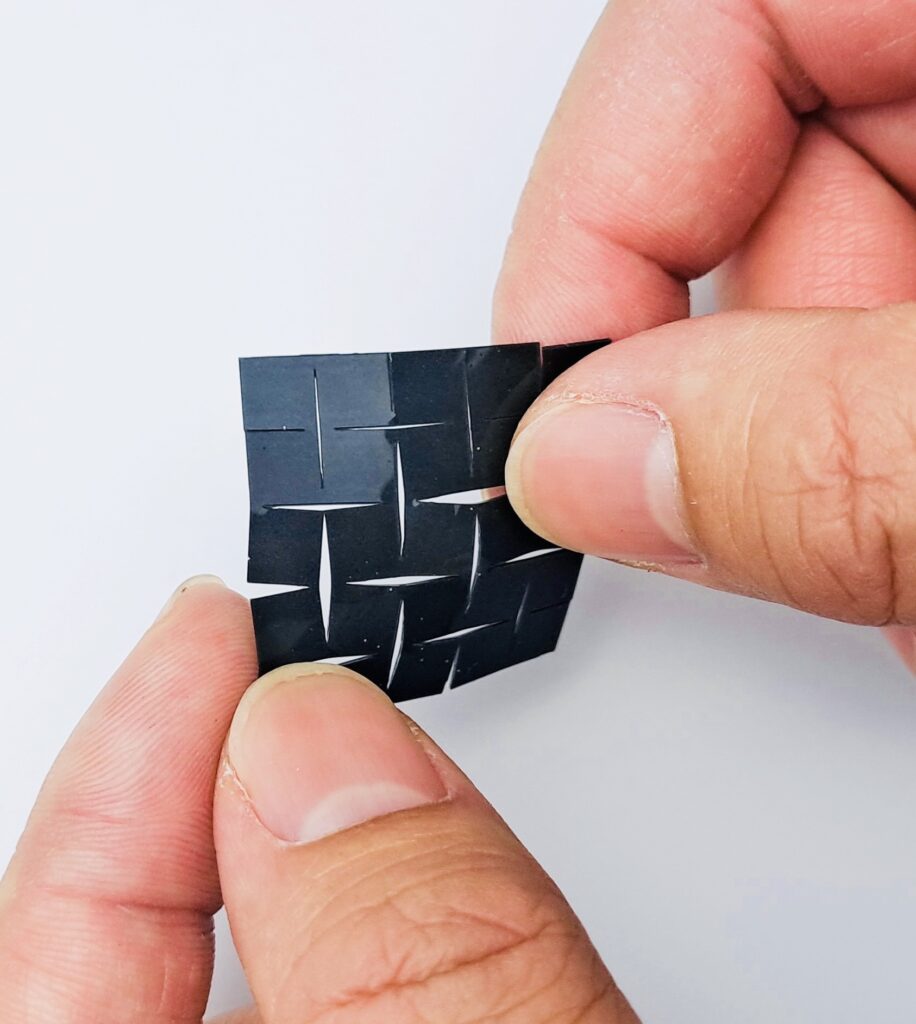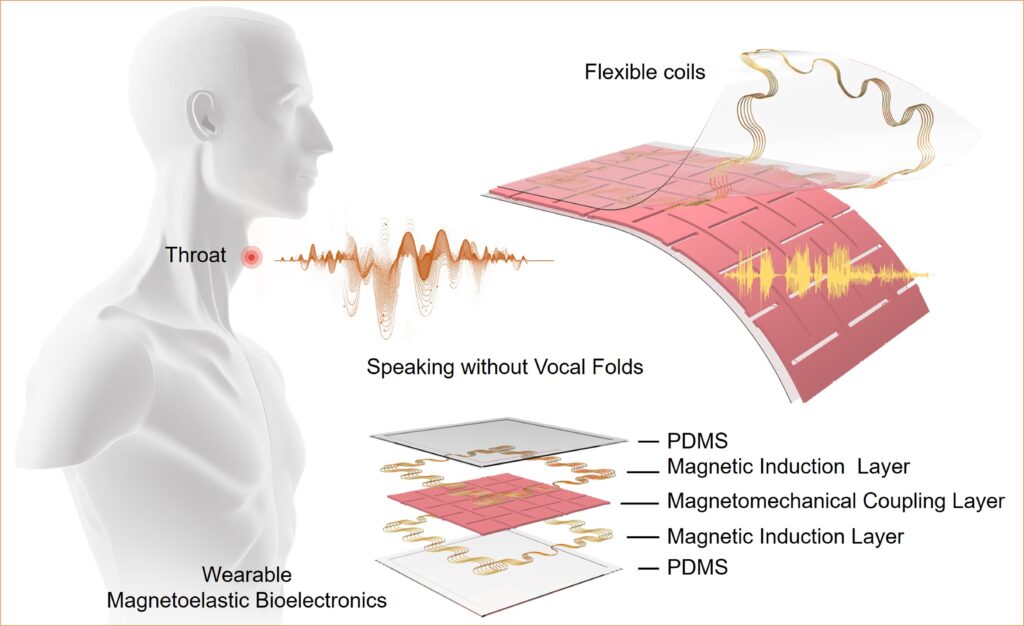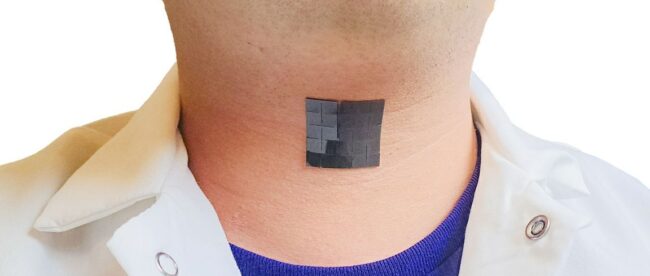UCLA Bioengineers Develop Wearable Device for Voice Disorder Treatment Using Machine Learning

Bioengineers at UCLA have developed a thin, flexible device that can aid people with voice disorders in regaining their ability to speak. The device adheres to the neck and translates the muscle movements of the larynx into audible speech using machine learning. This self-powered technology could serve as a non-invasive tool for individuals who have lost their voice due to vocal cord problems, such as those recovering from laryngeal cancer surgeries or with pathological vocal cord conditions.
The device consists of two main components: a sensing component and an actuation component. The sensing component detects and converts signals generated by laryngeal muscle movements into electrical signals using a soft magnetoelastic mechanism. These electrical signals are then translated into speech signals through a machine learning algorithm. The actuation component takes these speech signals and converts them into the desired voice expression. The lightweight, thin device can be easily attached to the throat area using biocompatible tape.

The researchers tested the wearable technology on eight healthy adults, achieving an overall prediction accuracy of 94.68% in translating laryngeal movements into corresponding sentences. Moving forward, the team plans to expand the device’s vocabulary through machine learning and test it on individuals with speech disorders. This non-invasive, wearable solution could provide a convenient option for people undergoing treatment or recovery from voice disorders, which affect nearly 30% of the population at some point in their lives.
Source: UCLA


Can this device enable individuals with disabilities such as Cerebral palsy, MS, Parkinson’s and Selective Mutism etc. to communicate?